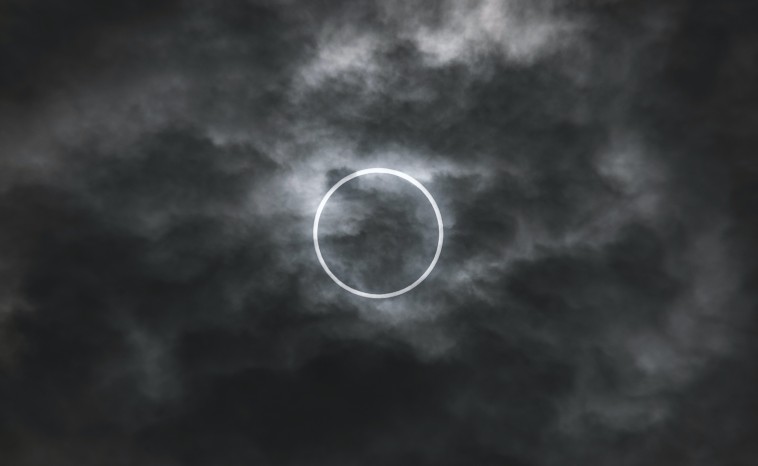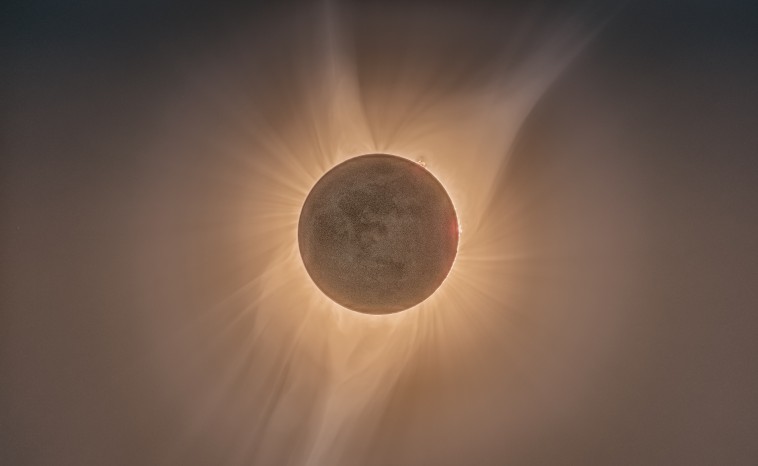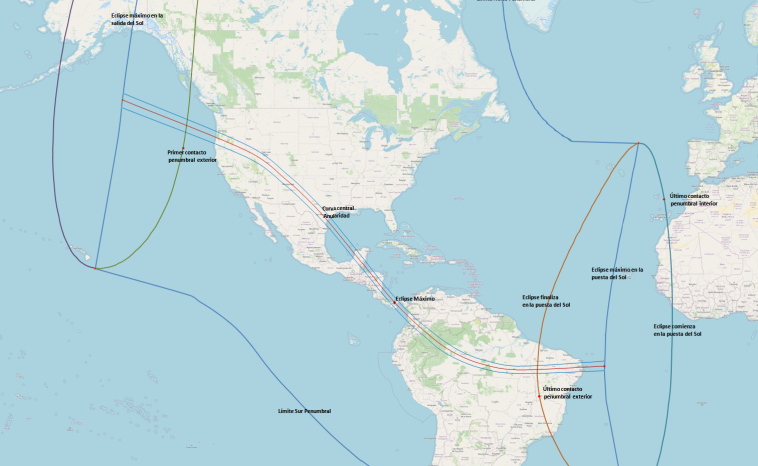What Is a Ring of Fire Eclipse?

In this article, we’ll examine the facts and history behind annular eclipses, also known as a ring of fire eclipse.
The enchanting spectacle of a solar eclipse has fascinated humanity for centuries. Yet, a particular type of solar eclipse captures the imagination even more: the annular solar eclipse, also known as the “Ring of Fire” eclipse. But what exactly is this celestial event, and how does it differ from other types of solar eclipses? Let’s dive in to find out.
Understanding the Ring of Fire Eclipse

An annular solar eclipse, also known as a ring of fire solar eclipse, is a captivating celestial event that takes place when the New Moon passes in front of the Sun but doesn’t entirely obscure its disk. During this extraordinary occurrence, a dazzling visual spectacle unfolds as the Sun forms a brilliant ring, an “annulus,” encircling the shadowed lunar disk. This enchanting phenomenon has earned the moniker “Ring of Fire” due to its captivating and awe-inspiring nature.
This type of eclipse is distinct from a total solar eclipse. During a total solar eclipse, the Moon completely obscures the Sun. However, in an annular solar eclipse, the Moon is positioned near the farthest point in its orbit from Earth. As a result, the Moon appears smaller in the sky and is unable to fully cover the Sun, creating a magnificent ring of light around the darkened silhouette of the Moon.
Comparing Solar Eclipses

There are three main types of solar eclipses: total, partial, and annular. As mentioned above, a total solar eclipse occurs when the Moon entirely blocks the Sun, creating a breathtaking sight as the Earth is engulfed in darkness. A partial solar eclipse, on the other hand, happens when the Moon only partially covers the Sun, casting a mesmerising dance of light and shadow on the Earth’s surface. Lastly, the annular solar eclipse results in the captivating “Ring of Fire” phenomenon, where the Moon’s smaller apparent size creates a stunning golden ring around the darkened Sun. These celestial events continue to captivate and inspire us, reminding us of the extraordinary wonders of our universe.
While all types of solar eclipses are awe-inspiring, the Ring of Fire eclipse has a unique beauty. Unlike the total solar eclipse, where the viewer is plunged into darkness, the annular solar eclipse bathes observers in an eerie, dim light—an unforgettable experience for any skywatcher.
Famous Ring of Fire Eclipses in History
Throughout history, many Ring of Fire eclipses have captivated observers. One of the most famous occurred on May 10, 1994, visible across a large part of the United States. This event sparked significant interest in astronomy and was widely covered by the media.
Another notable Ring of Fire eclipse occurred on December 26, 2019, visible from Saudi Arabia to Guam. This eclipse was particularly long-lasting, with the annularity phase lasting over three minutes in some locations. It created a stunning spectacle and was widely photographed and shared on social media platforms worldwide.
When Is the Next Ring of Fire Eclipse?

Fernando de Gorocica, CC BY-SA 4.0, via Wikimedia Commons
Looking ahead, astronomy enthusiasts are eagerly anticipating the next Ring of Fire eclipse, which will occur on October 14, 2023. This particular eclipse will be visible in eight US states, parts of Mexico, and many parts of South and Central America.
The most populous part of the eclipse path is Texas, the final U.S. state where the Ring of Fire will be visible. Therefore, if you’re based in the Lone Star State or planning to visit around that time, you might just get a chance to witness this spectacular celestial event.
So, mark your calendars and prepare your solar viewing glasses. The next Ring of Fire solar eclipse promises to be an unforgettable event for experienced skywatchers and novice stargazers alike!
How To Safely View a Ring of Fire Eclipse

Safety should always be paramount when viewing any type of solar eclipse, and the Ring of Fire eclipse is no exception. It’s important to remember that looking directly at the sun without proper eye protection can result in serious eye damage or even blindness.
Regular sunglasses, no matter how dark, are not adequate for this purpose. Instead, invest in a pair of ISO-certified solar viewing glasses. These special glasses allow you to safely observe the eclipse by blocking out the harmful ultraviolet and infrared rays. Similarly, you can attach solar filters to cameras, telescopes, or binoculars for safe viewing. Never look at the sun through these devices without a solar filter; concentrated solar rays can cause severe injury.
Another safe and easy method is to use a pinhole projector, which you can make at home with a couple of pieces of card or paper. The pinhole projects an image of the sun onto a screen, such as a piece of white paper or the ground. As the moon passes in front of the sun, you’ll be able to see the progressing eclipse.
For those unable to view the eclipse directly, several organisations broadcast live streams of the event. The Ring of Fire eclipse is a rare and awe-inspiring astronomical event. By following these safety guidelines, everyone can enjoy this celestial spectacle while protecting their eyesight.
The OSR Gift Card
Witnessing a Ring of Fire solar eclipse is an extraordinary experience, a celestial ballet danced on the grandest stage. It’s an event that brings together professional astronomers, amateur sky watchers, and those who simply appreciate the awe-inspiring phenomena our universe has to offer. As we anticipate the forthcoming eclipse on October 14, 2023, it’s an opportune time to reflect on the wonder of our cosmos and our place within it.
Looking for a gift that is truly out of this world? Our OSR Gift Card offers a unique opportunity to gift a celestial experience in anticipation of the next Ring of Fire Eclipse! It’s the perfect gift for the stargazers and astronomy enthusiasts in your life. Recipients can use the gift card towards any of our offerings, creating unforgettable cosmic moments. So why wait? Let the stars shine upon your loved ones and make their celestial dreams come true!

